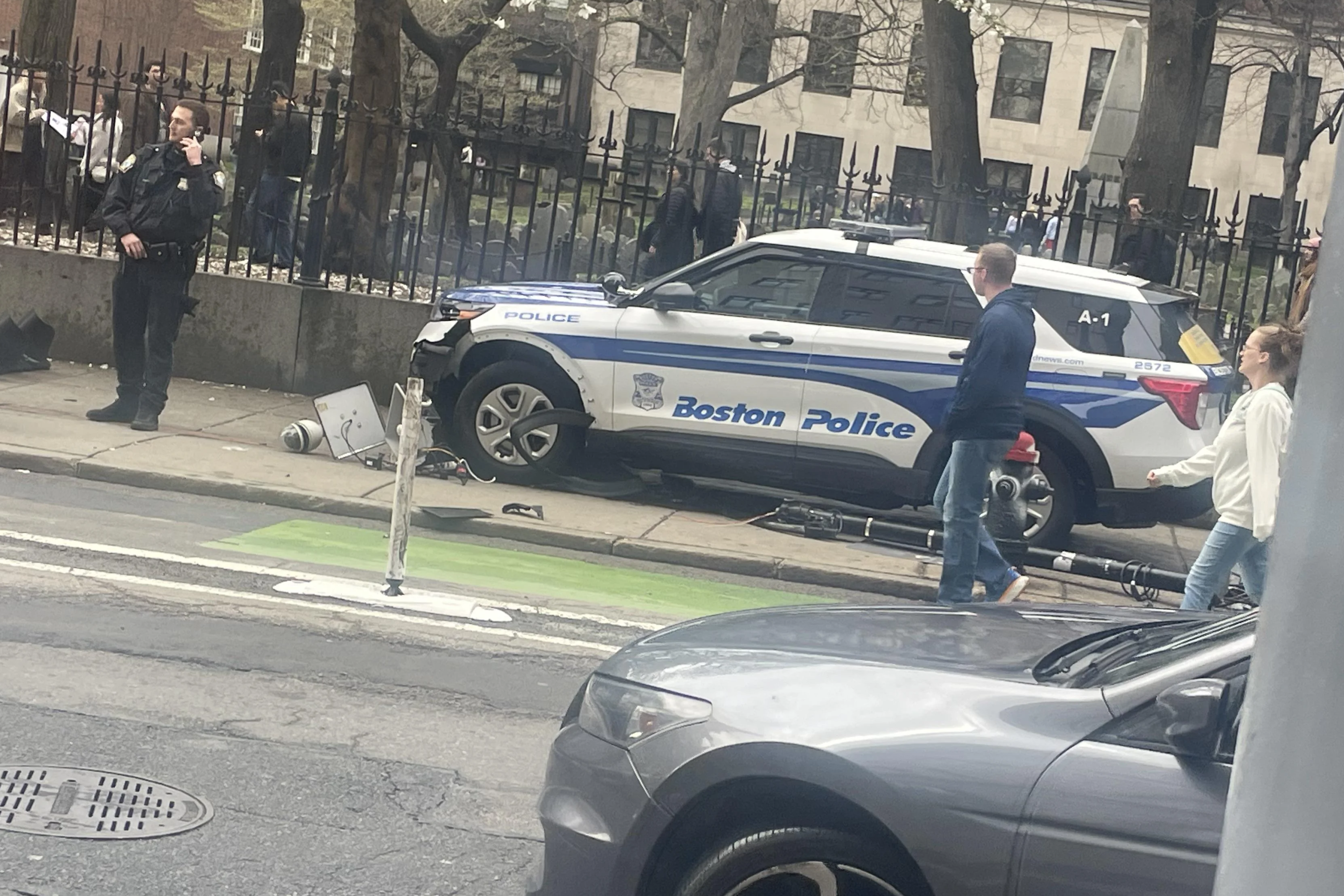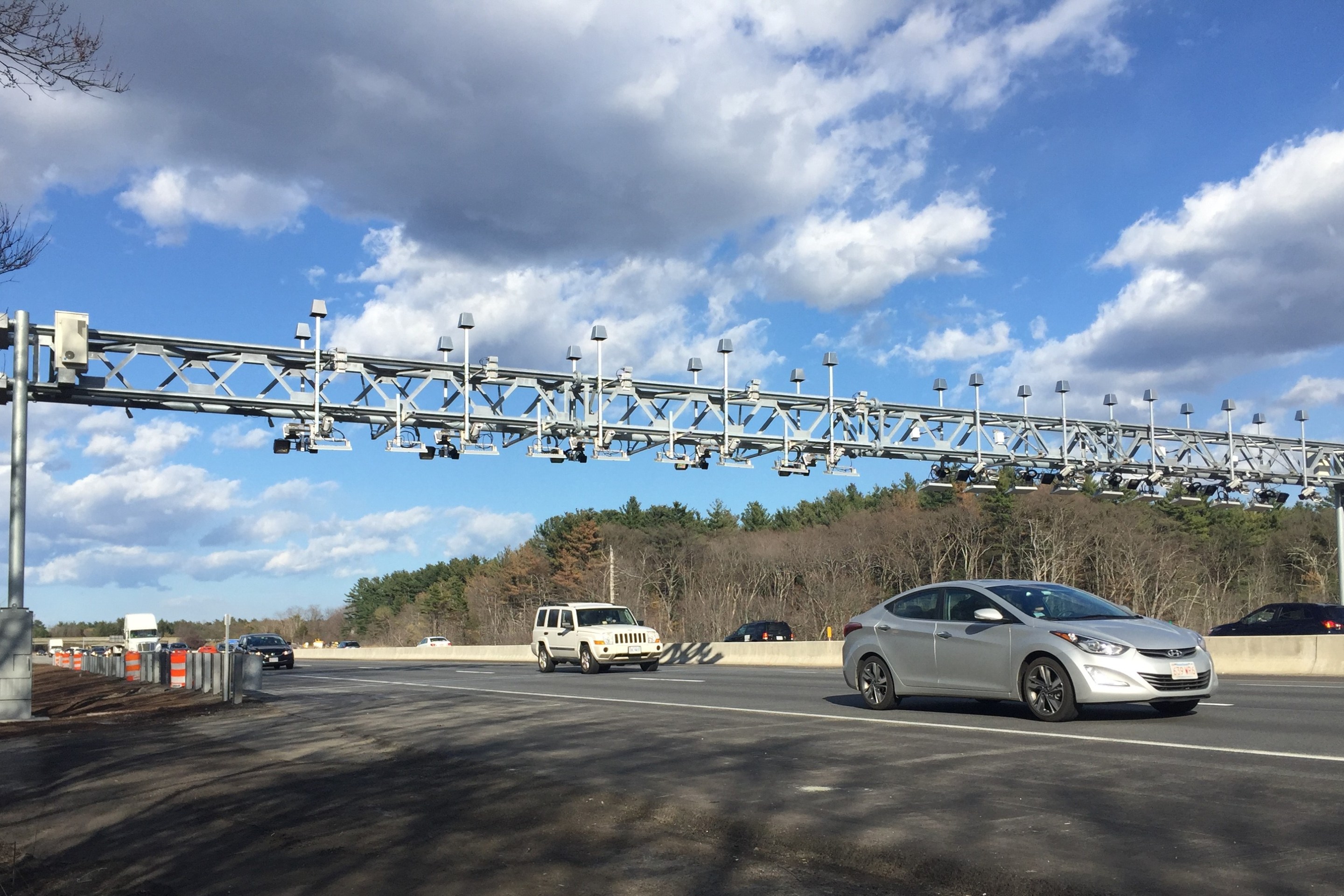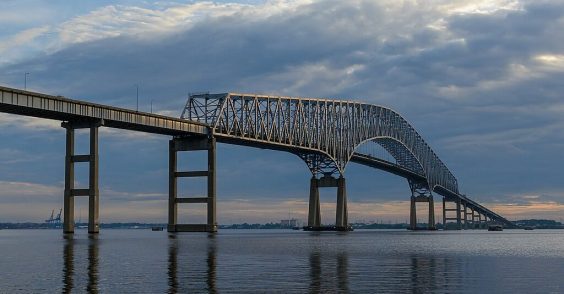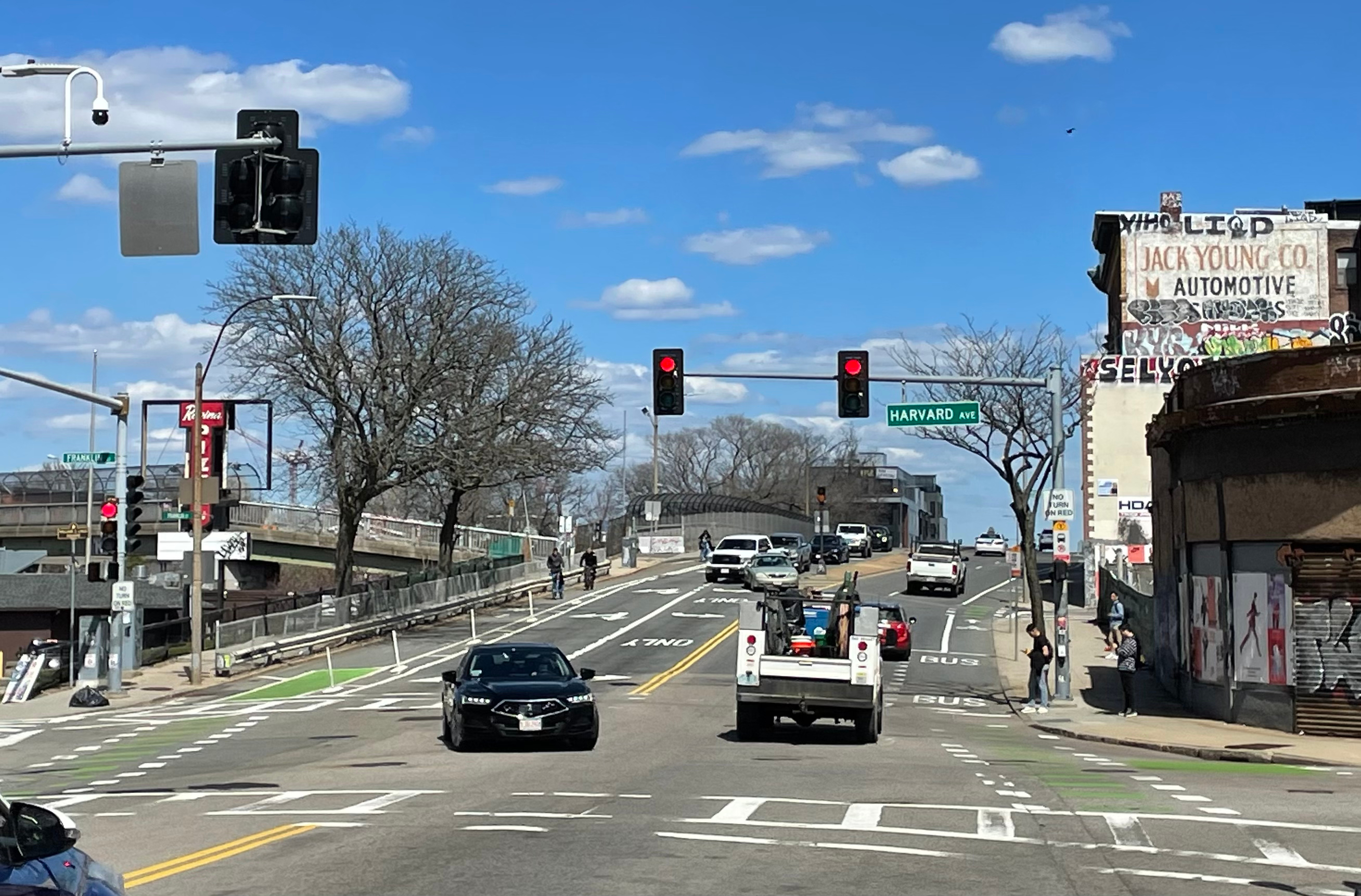What’s in Mayor Walsh’s 2021 Streets Budget?
11:48 AM EDT on April 10, 2020
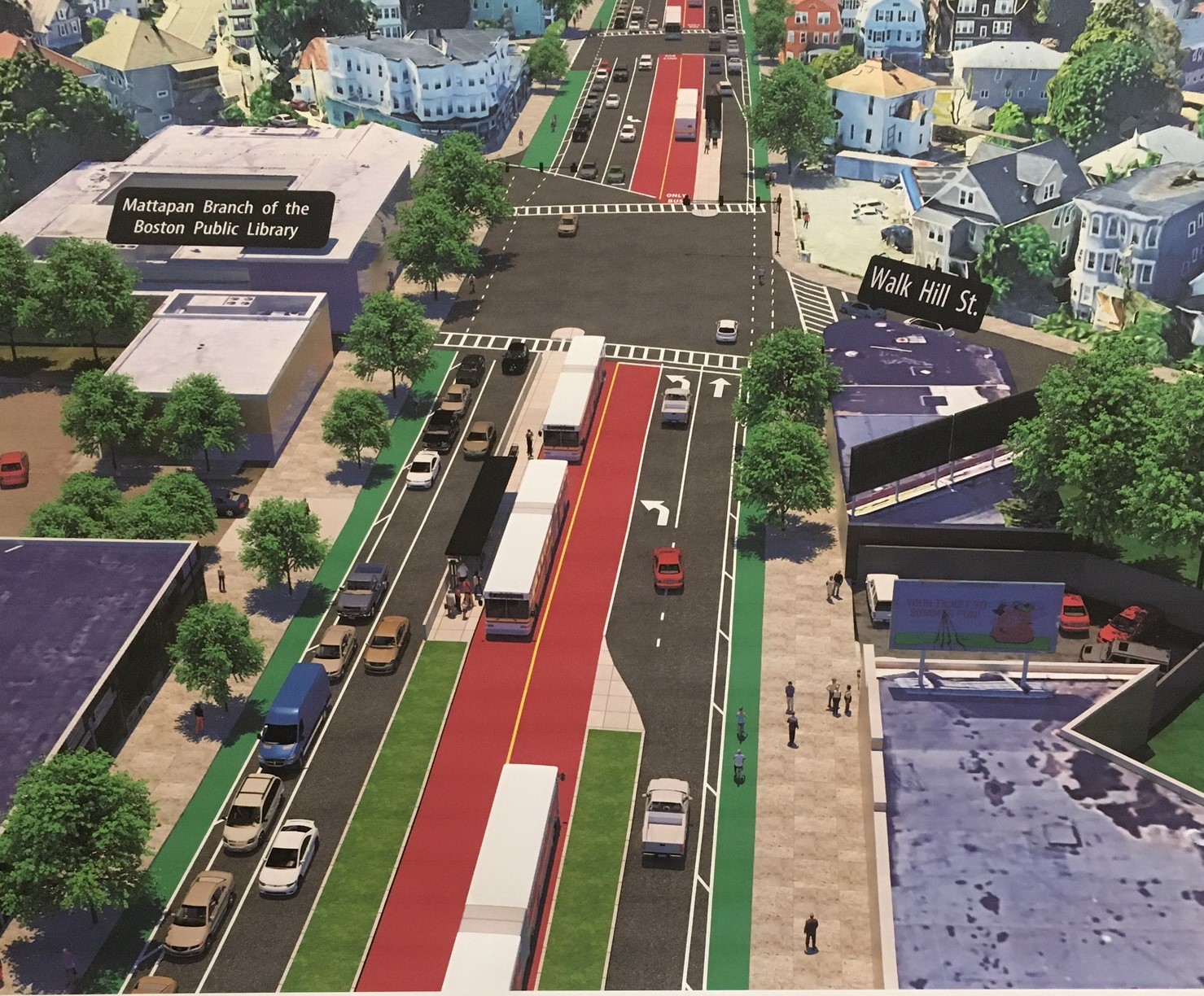
A City of Boston rendering from 2020 illustrates the city’s concept for center-running bus lanes on Blue Hill Avenue near Walk Hill Street. Under the plan, bus lanes and dedicated stations would run in the middle of the street, away from double-parked cars and turning vehicles. Pedestrian crossings would also be significantly shorter. Courtesy of the City of Boston.
On Wednesday, Boston Mayor Marty Walsh released his budget proposal for fiscal year 2021, which will begin on July 1.
We may be in the midst of a historic public health emergency, but the Mayor's budget proposal is a reminder that municipal officials across the Commonwealth are still attending to the quotidian affairs of government. The budget reflects an apparent expectation that projects such as a bus-focused redesign of Blue Hill Avenue (pictured above) and the city's Connect Downtown project are still going still move forward in the coming months.
The city’s GoBoston 2030 report, adopted in 2017, set a goal of cutting car traffic in half by 2030, and the Mayor recently reaffirmed that goal as a key part of the city's climate action plan. However, there has been no progress on that benchmark to date and the amount of traffic in the city has actually increased over the past decade. When the next fiscal year is over, the city will have just eight more years to meet that goal.
Here are some of the highlights from the mayor's budget for transportation projects and programs (you can download the complete Public Works Department and Boston Transportation Department budget documents here):
- Mayor Walsh has proposed an increased budget for the Boston Transportation Department's planning staff, who oversee major initiatives like the city's bus transit priority efforts, street redesigns, and active transportation projects. Under Walsh's proposal, the Department's Policy and Planning Division payroll would grow from $1.4 million in the current fiscal year to $1.6 million next year.
- The budget authorizes $1 million for future Bluebikes station expansions. The proposed funding would add "11 new stations and 440 new bikes, mostly across Hyde Park, Mattapan, and Dorchester," according to budget documents.
- $3 million has been budgeted for the construction of new dedicated bus lanes in the coming year, including "Summer Street, Columbus Avenue and Warren Street."Another $260,000 has been earmarked for "an action plan and implementation program for rapid bus transit between North Station and the Seaport," a concept that could utilize new bus lanes on Summer Street through the Seaport.
- Several other items in the capital budget could advance the city's ambitious plans for bus rapid transit on Warren Street and Blue Hill Avenue (pictured above), including funds for the reconstruction of "Warren Street and Blue Hill Avenue from Nubian Square to Talbot Avenue," plus funding for additional planning and outreach work.The Department of Public Works has also budgeted $5.5 million in the proposed five-year capital plan to "repave and restripe the entire Blue Hill Avenue corridor from Mattapan to Roxbury."
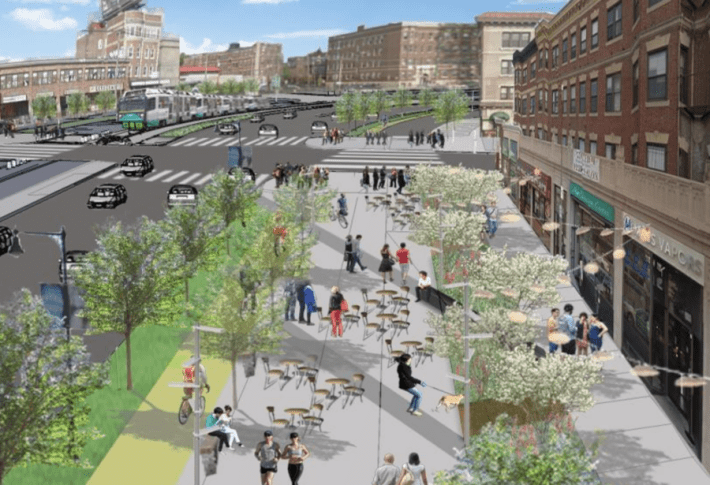
The city expects to spend $1 million in the coming year for advanced design of the Commonwealth Avenue Phase 3B project, which would reconfigure the Avenue near Harvard Ave. in Allston. An earlier conceptual design (pictured at right) proposed replacing the "carriage road" parking area at this intersection with a generous new public plaza, plus new cycle tracks that would eventually connect to the facilities built through the Boston University campus last year. A total of $10 million is being budgeted for the project in the city's five-year capital plan.
Another $1.7 million is budgeted in the five-year capital plan for ongoing design work on other segments of Commonwealth Avenue west of Packard's Corner.

In spite of widespread unemployment, the Walsh administration is not expecting any major impacts to its tax collections or city spending for the next year.
"In Boston, we have built our budget to be prepared for this uncertainty," said Mayor Walsh in a statement accompanying his proposal. The majority of the city's tax revenue comes from property taxes, which are relatively stable through recessions; the city also expects to get a modest boost in property tax collections from dozens of new construction projects that are still in progress.
Read More:
Stay in touch
Sign up for our free newsletter
